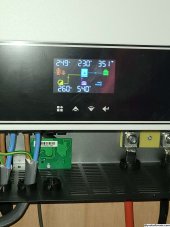SenileOldGit
Solar Enthusiast
- Joined
- Oct 15, 2022
- Messages
- 320
If these inverters were either a) not working b) electrocuting people or c) setting on fire, since they are the majority of inverter sales in the world (due to their price - but please correct me if you have evidence to the contrary) we would be hearing about it from SOMEBODY.
I'm not passionate about this model, just interested in the low prices, because it changes the way I look at my inverters, and the need for them to last ten years or whatever, without failure, goes away.
I'm not passionate about this model, just interested in the low prices, because it changes the way I look at my inverters, and the need for them to last ten years or whatever, without failure, goes away.







